
HomePony Know HowPony Care TipsStable ManagementBeat the heat
-
Pony Care Tips
Learn everything you need to know about caring for your fave pony. From feeding and grooming to mucking out – we have it all here!
-
Riding Tips
Improve your riding with our fab articles! Whether it's building your confidence, riding shapes, or jumping spreads that you need tips on, we have something for every rider.
Latest News
Beat the heat
Posted in Stable Management
Help your pony keep his cool when it’s hot, hot, hot this summer
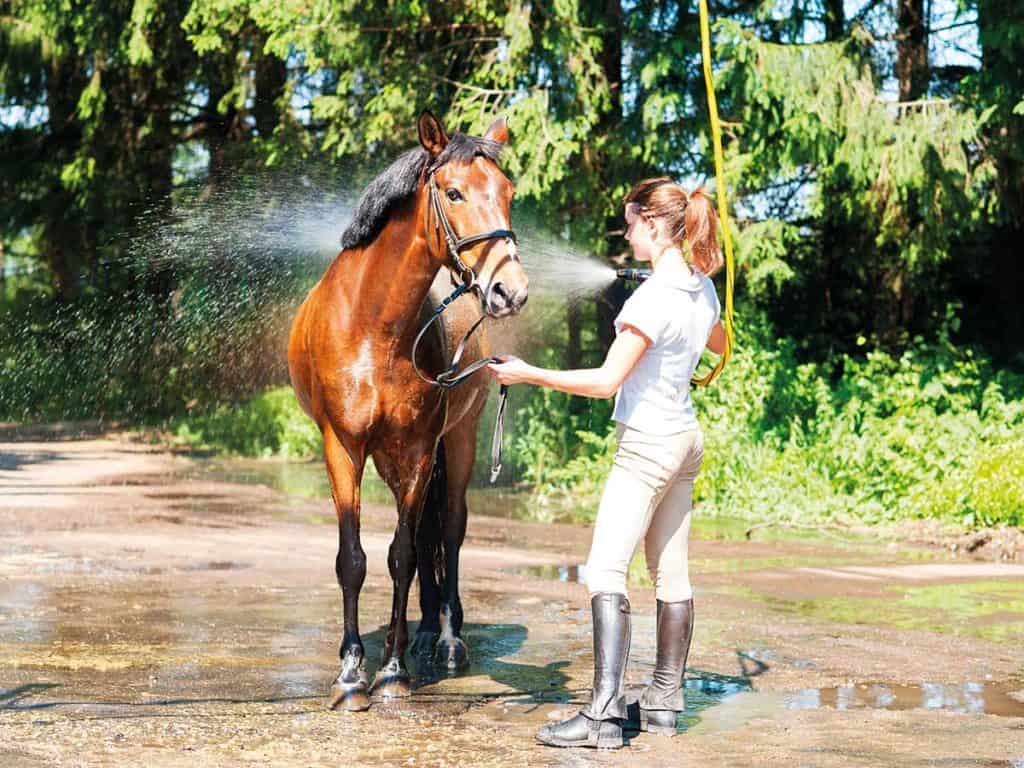
Under cover
Your pony will enjoy feeling the warmth of the sun on his back when he’s out in the field, but if it gets really hot he’ll prefer to stand somewhere cool. It’s super-important that he has plenty of shade, which could be a field shelter or hedges and trees that cast large shadows.
The other option is to stable him during the day when it’s hot, then turn him out in the evening when it’s cooler. If he’s stabled in the daytime, make sure the sun doesn’t shine directly into his face when he looks out over the door. If so, move him to a shadier spot.
Did you know?
Don’t forget that the sun changes position during the day, so your pony will need shade on more than one side of his field.
Slip, slap, slop
You wouldn’t go out in the sun unprotected and it should be the same for your fave pony, too. If he has a pink nose or pink skin on his legs or body he’ll be at risk of sunburn. You can buy sunblock designed for ponies, or use a high-factor children’s suncream or spray.
Some fly masks and rugs have built-in UV protection, which means they filter out some of the sun’s harmful rays. They can help protect your pony’s face and body from sunburn, too.
Did you know?
Dark coloured coat hair can be bleached by the sun, but a UV fly rug will help stop this happening.
Working up a sweat
Sweating is a natural process that helps your pony cool down, but he’ll lose water that needs to be replaced through drinking. Sweat also contains important body salts called electrolytes and these should be replaced, too. You can do this by giving him a salt lick or adding an electrolyte supplement to his feed if he’s working hard.
Did you know?
A horse working on a hot day can lose up to 10-15 litres of fluid, which is the same as a full bucket of water!
Water way
Your pony should always have fresh, clean water to drink, but this is super-important in hot weather as he’ll be extra thirsty. So, keep buckets and troughs topped up.
If he doesn’t drink enough he could become dehydrated, which can make him really ill. Signs he may be dehydrated include…
- being lethargic and stumbling
- dry gums
- passing wee that’s darker than usual
- having skin that’s inelastic, which means that if you gently pinch a small area of skin on his neck it stays upright and doesn’t go flat straight away
If you’re worried about your pony, call your vet for advice.
Time to ride
If it’s going to be a really hot day, try to ride early in the morning or in the evening when it’s cooler. It’ll be more comfortable for you and your pony, especially if you’re planning to do something active, such as schooling or jumping. If you do need to ride during the daytime, consider going for a hack along a woodland bridleway, where the trees will provide plenty of shade.
When you’ve finished riding, wash or sponge off your pony to remove any sweat and help him cool down, then use a sweat scraper to take off any excess water. You can pop a mesh rug on him until he’s dry. Offer him a drink, too, as he’s sure to be thirsty.
Show the way
If you go to a show on a hot day, think about how the heat could affect your pony. Keep him out of the sun as much as possible, either by tying him on the shady side of the horsebox or finding some trees to stand under. Make sure he has plenty to drink during the day and don’t forget to apply suncream, too.
Ponies can feel sleepier when the weather’s hot, so don’t overdo it in the warm-up to make sure your pony has some energy to perform in his class. If it’s really hot, it could be a good idea to do fewer classes than you’d planned or save your pony for another day.
Did you know?
Ponies can get hot when travelling in a lorry or trailer and sweat up like they do when they’re working hard. Break up your journey to offer your pony a drink, and make sure he’s comfortable.
Bug watch
Another challenge your pony faces in warm weather is being targeted by pesky flying insects that love sunny conditions. Protect him with fly repellent and a fly rug, and make sure he has somewhere to shelter away from the bugs.
TOP TIP
Hot, dry weather can make the ground hard, too, so avoid cantering or jumping where the ground’s unsuitable to help protect your pony’s legs from injury.


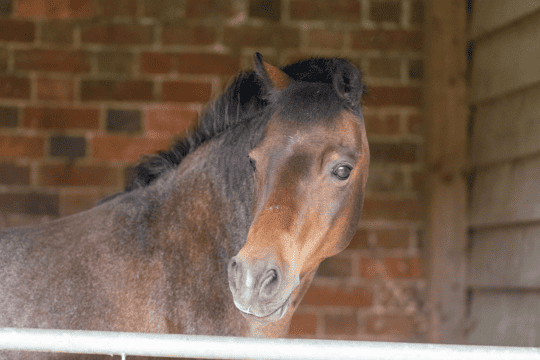
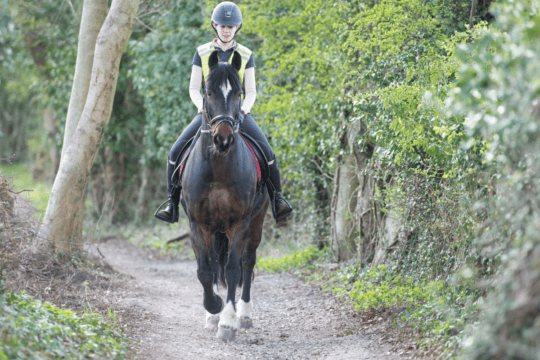
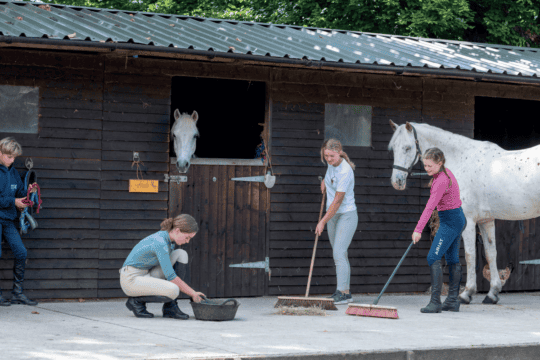
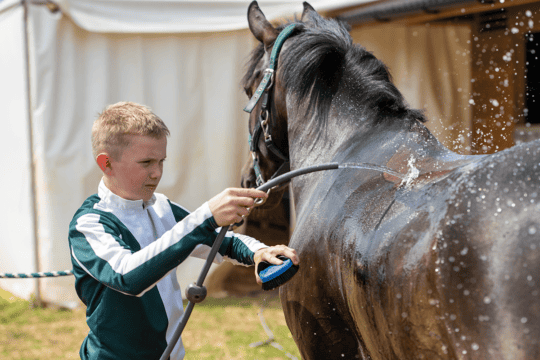
















Leave a Reply
You must be logged in to post a comment.